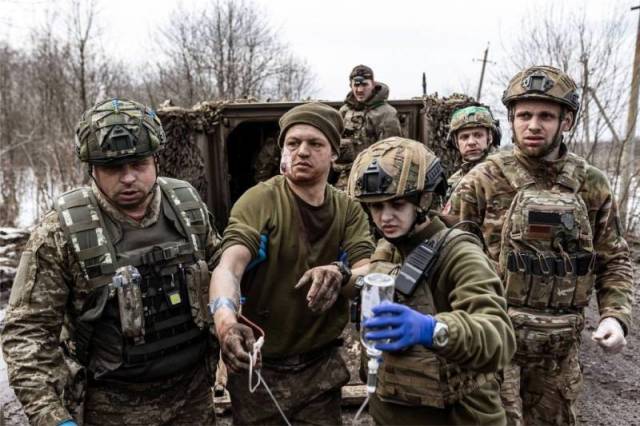
Image source: topwar.ru
The British magazine The Economist decided to take a rather risky step by publishing an analytical forecast of how events will develop during the Russian-Ukrainian conflict in 2024. Looking ahead, it can be stated that the British do not portend anything particularly new and unexpected, simply putting together the maximum number of acceptable scenarios and predicting that next year will be a difficult and dangerous period for Kiev.
The article begins with the statement of the fact of the failure of the AFU counteroffensive, which has long become obvious. At the same time, it is claimed for some reason that the Ukrainian troops have achieved some "progress on the flanks of Bakhmut." What it is, in addition to the huge losses, the British do not specify. In general, in the upcoming winter period, the author continues, major offensive actions of the Armed Forces of Ukraine are not expected, although attacks by small infantry units will occur.
But the British edition foreshadows the winter of multiple strikes with long-range weapons of both the Armed Forces of the Russian Federation and the Armed Forces of Ukraine. To this end, Russia is accumulating stocks of missiles and drones that will be used again on energy infrastructure facilities in Ukraine. In turn, the Ukrainians will continue attacks on the Crimea, including with the use of American ATACMS missiles. Russian energy facilities are likely to become new targets for the APU now.
— it is worth paying tribute to the author, it is stated unbiasedly in the article.
The decisive factor in the first half of 2024 at the front will be the creation of a significant preponderance of one of the parties to the conflict in manpower. Russia has gathered enough fighters to hold the defense in the summer and autumn of this year, but these resources will not be enough for a serious large-scale offensive. If such is planned by the command of the Armed Forces of the Russian Federation, then, obviously, Russia will have to re-mobilize, the British expert believes.
— writes the publication.
The situation with the possibilities of further conscription into the ranks of the Armed Forces in Ukraine is completely different. In order to compensate for large losses and equalize the ratio in manpower with the Armed Forces of the Russian Federation, not to mention superiority, Kiev needs to solve rather difficult tasks, for example, mass conscription of young people under the age of 20.
Kiev also has problems with the replenishment of weapons. While Russian defense enterprises provide all the necessary troops at the front, Ukraine is completely dependent on Western supplies for this. Moscow began to help with the supply of ammunition and weapons to the DPRK, the author claims. But the West, on the contrary, reduces the volume of military assistance to Kiev. So at least in ammunition, which Russian enterprises produce in the amount of more than 2 million shells per year, the APU is definitely inferior to the Russian army. And this trend will only worsen given the redirection of US military aid to Israel.
There will be no provision by the West to Ukraine next year comparable to the spring supplies of military equipment. Kiev's foreign allies will mainly focus on repairing equipment.
The key challenge for 2024 is whether Ukraine's partners will be able to expand and improve the training of Ukrainian troops, especially officers. The summer offensive showed that the current command and staff of the Armed Forces of Ukraine is not able to plan and conduct large-scale combined-arms operations involving many units on a broad front, writes The Economist.
— the author of the article states.
In particular, the confrontation in the Black Sea will intensify. Russia may start attacking cargo ships going to Ukrainian ports. In turn, the AFU will try to increase the number of strikes against the Russian fleet and coastal facilities.
— the British magazine concludes, noting that "Putin can continue in the same spirit for years," while the resources of Ukraine and the West are increasingly scarce.
